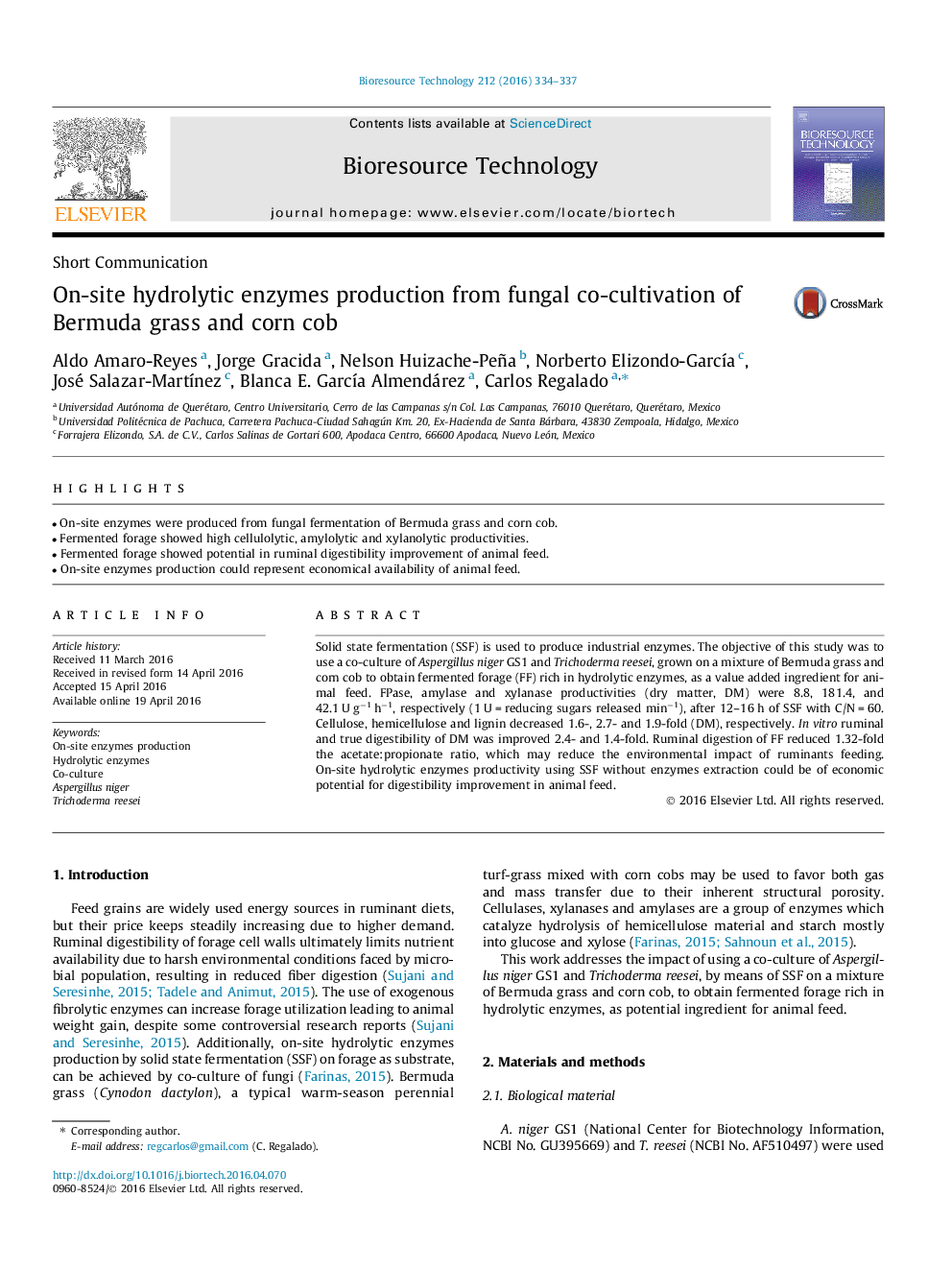| Article ID | Journal | Published Year | Pages | File Type |
|---|---|---|---|---|
| 7071444 | Bioresource Technology | 2016 | 4 Pages |
Abstract
Solid state fermentation (SSF) is used to produce industrial enzymes. The objective of this study was to use a co-culture of Aspergillus niger GS1 and Trichoderma reesei, grown on a mixture of Bermuda grass and corn cob to obtain fermented forage (FF) rich in hydrolytic enzymes, as a value added ingredient for animal feed. FPase, amylase and xylanase productivities (dry matter, DM) were 8.8, 181.4, and 42.1Â UÂ gâ1Â hâ1, respectively (1Â UÂ =Â reducing sugars released minâ1), after 12-16Â h of SSF with C/NÂ =Â 60. Cellulose, hemicellulose and lignin decreased 1.6-, 2.7- and 1.9-fold (DM), respectively. In vitro ruminal and true digestibility of DM was improved 2.4- and 1.4-fold. Ruminal digestion of FF reduced 1.32-fold the acetate:propionate ratio, which may reduce the environmental impact of ruminants feeding. On-site hydrolytic enzymes productivity using SSF without enzymes extraction could be of economic potential for digestibility improvement in animal feed.
Related Topics
Physical Sciences and Engineering
Chemical Engineering
Process Chemistry and Technology
Authors
Aldo Amaro-Reyes, Jorge Gracida, Nelson Huizache-Peña, Norberto Elizondo-GarcÃa, José Salazar-MartÃnez, Blanca E. GarcÃa Almendárez, Carlos Regalado,
